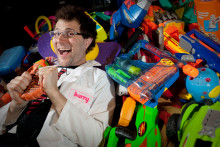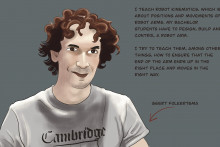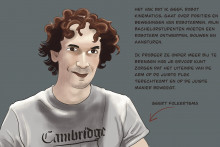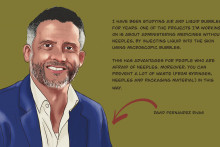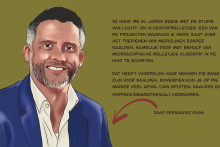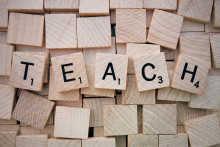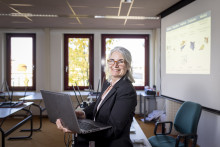Kudrowitz started his lecture by saying ‘we are actually going to do stuff today’. After a short video of the ‘ketchup-pooping robot’ that he designed a few years ago, the audience is put to work. ‘I am going to play a little game with you. I’ll set my timer to three minutes. Write down as many uses you can think for this paperclip’.
Improv comedians
His assignment is an ‘alternative usage test’. Kudrowitz: ‘In my research, I found that people who have more ideas, have more creative ideas as well.’ In his research, different groups were studied, but the people that stood out because of many creative product ideas were professional improv comedians. ‘They were coming up with better ideas than professional product designers.’
Another group that stood out were small children. ‘Something that education does, is work against creativeness by making up rules. Universities don’t select on creativity, but the industry does. We are not teaching to be creative, but we are looking for creative leadership.’
Grades, Tigers and Bears
Kudrowitz’ theory is that playing makes people more creative. He referred to the paperclip assignment and asked the audience how playful they think it was. It turned out the people who viewed it as playing, had more ideas than the people that viewed it as work. ‘If you view an activity as play, you are going to be more creative in that activity. But how do you adjust the challenge to make it playful? Especially students have something that is working against all of this, grades. If you are graded on it, it is not play.’
How can we be more playful in generating ideas? To answer this question, Kudrowitz studied how improvisation comedy – improv – is taught. ‘If you do improv for more than 40 minutes, you come up with more ideas. There is something magical about it.’ To show what he means, the researcher made the audience play one of those improv games, called Tigers and Bears. One person is the tiger, one the bear. You must tell your partner as many reasons why the bear or tiger is awesome. It does not have to make sense; the aim is to come up with as many ideas. Kudrowitz: ‘Quantity is very important for creativity, it forces you into that distantly related stuff, the non-obvious connections that are hard to make.’
Non-obvious connections
In the final part of the lecture, Kudrowitz played another game: letting the audience combine products and coming up with an idea that crosses elements. The ideas were shared in the group. Kudrowitz: ‘We are coming up with silly ideas, we are playing around. Are we not only going to come up with bad ideas? No. When we are playing we are inhibitive in our thinking. When you add play to things, they become more effective. You are going to have a lot of ideas that you think are silly. And if somebody laughs at them, that means you found a non-obvious connection. That non-obvious connection might be a joke now, but it could be an innovation that needs a little bit more time.’


